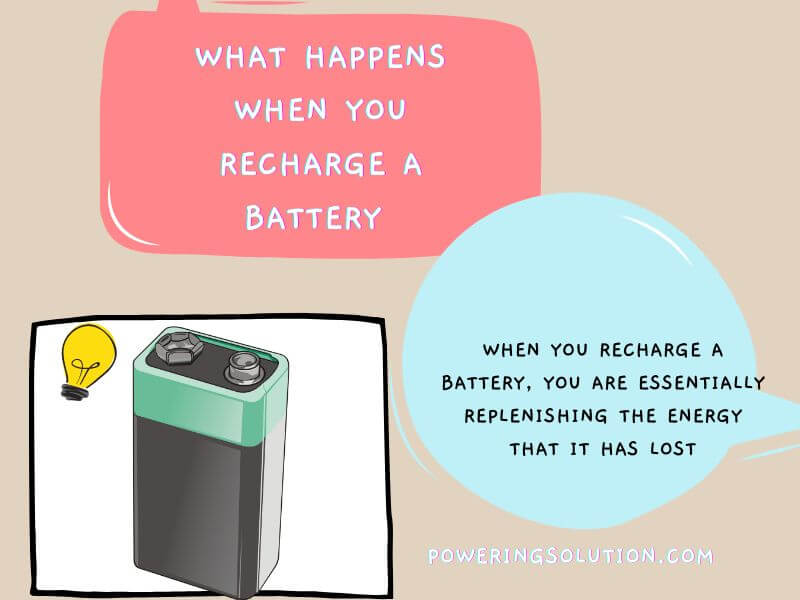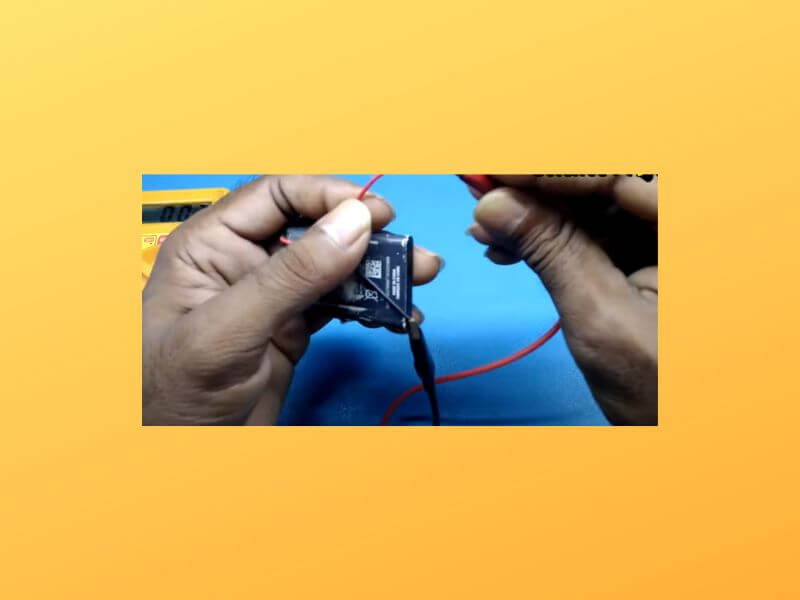When you recharge a battery, you essentially replenish the energy it has lost. Batteries work by converting chemical energy into electrical energy; when depleted, they must be recharged to continue functioning. Recharging a battery is relatively simple and can be done with a charger or by plugging it into an outlet.

A battery is a device that stores chemical energy and converts it into electricity. When you recharge a battery, you replenish its stored energy so it can be used again. Recharging a battery is fairly simple and straightforward, but there are a few things to keep in mind to ensure optimal performance.
First, using the proper charger for your specific battery type is important. Using the wrong charger can damage the battery or even cause it to explode.
Second, don’t overcharge the battery. This can also damage the battery and shorten its lifespan.
Finally, store the battery properly when not in use – this will help prevent leaks and other issues. Recharging a battery is relatively easy, but there are a few things to keep in mind to ensure optimal performance.
By following these simple tips, you can prolong the life of your batteries and get the most out of them!
How Do Rechargeable Batteries Recharge?
The process of recharging a rechargeable battery is simple. When the battery is hooked up to an electrical outlet or another power source, the charger sends an electric current through the battery. This current reverses the chemical reaction that occurred when the battery was being used and restores the charge in the battery.
The whole process usually takes a few hours. It’s important to note that not all batteries can be recharged – only those specifically marked as “rechargeable.” Additionally, some types of batteries (like lithium-ion batteries) can only be charged a certain number of times before they need to be replaced.
How Does a Charger Know When a Battery is Full?
A battery charger is a device that puts energy into a secondary cell or rechargeable battery by forcing an electric current through it. The charging process causes a chemical reaction within the battery that restores its electrochemical balance. This can be done with either alternating current (AC) or direct current (DC).
When AC is used, the charger converts it to DC before sending it to the battery. How does a charger know when a battery is full? Most chargers have some form of circuitry that monitors the voltage and/or current going into the batteries.
When this value reaches a predetermined level, the charger shuts off automatically.
How to Recharge Batteries Without Charger?

Batteries are an important part of our lives. They power our phones, laptops, and other devices on the go.
But what do you do when your battery runs out, and you don’t have a charger?
There are a few ways to recharge batteries without a charger:
| Number one | If you have a laptop with a USB port, you can use a USB cable to charge your phone or another device. You can also use a car charger to recharge your devices while on the road. |
| Number two | If you’re in a pinch, you can also recharge your batteries with AA or AAA. Simply remove the back cover of your device and insert the batteries into the appropriate slots. Once they’re inserted, turn on your device and wait for it to power up. This method will work in a pinch, but it’s not ideal because it takes longer to charge your device this way. |
Protips
It’s always best to have a backup charger handy, just in case your battery runs out when you’re away from home. But if you find yourself without one, these tips will help you get back up and running in no time!
Rechargeable Battery
Rechargeable batteries are becoming increasingly popular as people look for ways to reduce their environmental impact. These batteries can be used in various devices, from cell phones to laptops. The most common type of rechargeable battery is the lithium-ion battery.
Lithium-ion Battery
This battery is very lightweight and has a high energy density, making it ideal for portable electronic devices. Lithium-ion batteries can be charged and discharged hundreds of times before they need to be replaced.
Nickel-Cadmium (NiCd) and Nickel-Metal-Hydride (NiMH)
Other rechargeable batteries include nickel-cadmium (NiCd) and nickel-metal-hydride (NiMH).
These batteries are heavier than lithium-ion batteries, but they can also be used in various devices. NiCd and NiMH batteries can be charged and discharged many times before they need to be replaced.
How Long to Charge Rechargeable Batteries the First Time?
If you have a new device that uses rechargeable batteries, you may be wondering how long to charge them before using the device. It is important to charge the batteries for the recommended amount of time specified by the manufacturer. This will ensure that the batteries can power your device properly and prevent damage to the battery or device.
Most manufacturers recommend charging rechargeable batteries for at least 24 hours when they are first used. This allows the battery to reach its full capacity and ensures optimal performance. After the initial charge, you can usually expect your battery to last for several hours before needing to be recharged again.
If you try to use your device before fully charging the batteries, you may notice that it doesn’t work as well as it should. The battery may not last as long as usual, or it may not hold a charge as well. In some cases, using a device with low-charge batteries can damage the battery or cause other problems. There are different types of charging methods, so it is crucial to be careful while charging.
For this reason, it’s always best to err on the side of caution and make sure your batteries are fully charged before using your device.
Frequently Asked Question
What Happens When You Recharge a Non-Rechargeable Battery?
When you recharge a non-rechargeable battery, the chemical reaction that occurs inside the battery reverses. This means that instead of producing electricity, the battery now consumes it. The amount of current that flows through the battery during this process is very small, so there is no danger of the battery exploding or catching fire.
However, recharging a non-rechargeable battery will shorten its lifespan and eventually cause it to fail.
Is Recharging a Battery Safe?
Most people believe that recharging a battery is safe, but some risks are involved. Overcharging can damage the battery, leading to reduced performance and a shorter lifespan. It can also cause the battery to leak chemicals, which can be dangerous if they come into contact with skin or eyes.
If you’re going to recharge a battery, be sure to follow the manufacturer’s instructions carefully and never leave it unattended while charging.
What Happens If You Charge Non-Rechargeable Batteries?
If you charge a non-rechargeable battery, it will eventually overheat and leak, potentially causing damage to your device. In some cases, the battery may even explode. So it’s definitely not something you want to do!
If you’re unsure whether a battery is rechargeable, it’s always best to err on caution and not try to charge it.
Conclusion
When you recharge a battery, electrons flow from the negative terminal to the positive terminal. This flow of electrons creates an electric current that charges the battery.
